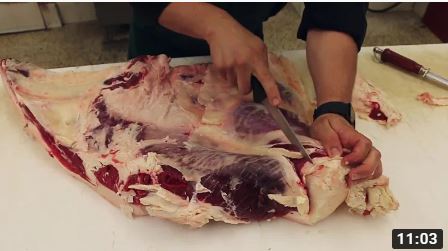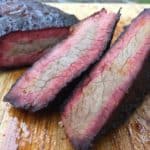The Bavette Steak, also known as the Flap Steak, is one of those steaks that doesn’t get nearly as much attention as it deserves. That’s a shame since this steak is affordable, delicious and, when sliced against the grain, incredibly tender.
At first glance the bavette doesn’t seem like much to look at. It looks pretty similar to a skirt steak.
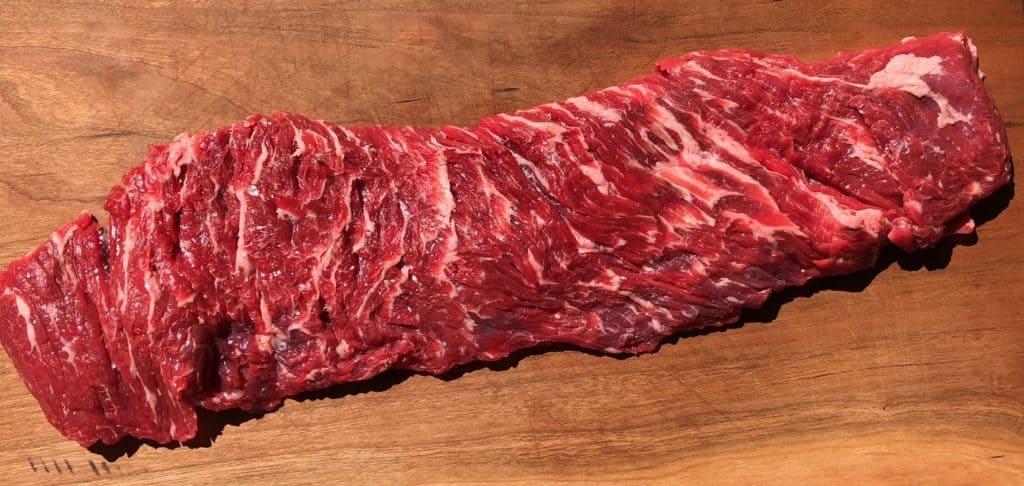
But if you take a closer look, literally, you will see something interesting. The grain structure of the muscle fibers on this cut of meat is incredibly loose and open.
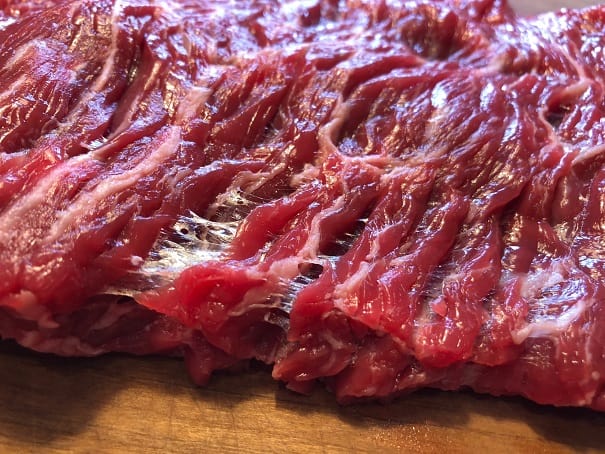
The open grain structure has two benefits.
- It helps make the steak incredibly tender since the muscle fibers are not tightly bound to each other.
- The openness lets this steak really soak up marinades.
How To Grill a Bavette Steak
This cut of beef is extremely versatile and is a family favorite at my house. The beef is easy to cook, tastes great, and does not need to rest after cooking so you can literally be ready to eat in just a few minutes!
This is a thin steak so I like to grill it hot and fast. There is no need to do a complicated Reverse Sear like you would for a thick cut Tomahawk steak. Heck, you can even pan fry the bavette and it will come out tasting great!
Marinate the Bavette
I like to take advantage of the loose, open grain structure of the bavette and let it soak up a marinade. You can skip this step and just go with a simple salt and pepper treatment if you are short on time.
Marinade Recipe
- 1 cup soy sauce
- 1 tablespoon black pepper
- 1 tablespoon fresh ginger paste
- 1 tablespoon chopped garlic
- 1 tablespoon brown sugar
Combine the marinade ingredients and let the steak marinate in the refrigerator for 1-4 hours.
Grill the Bavette
To prepare the grill I placed about 40 Kingsford briquettes into a charcoal chimney and lit them with some newspaper. It takes about 20 minutes for the coals to completely light and ash over.
Dump the lit charcoal into the center of your charcoal grill and use tongs to arrange them in a layer/strip that is long enough to cook the length of the bavette evenly.
If you are using a gas grill just turn all of your burners up to high.
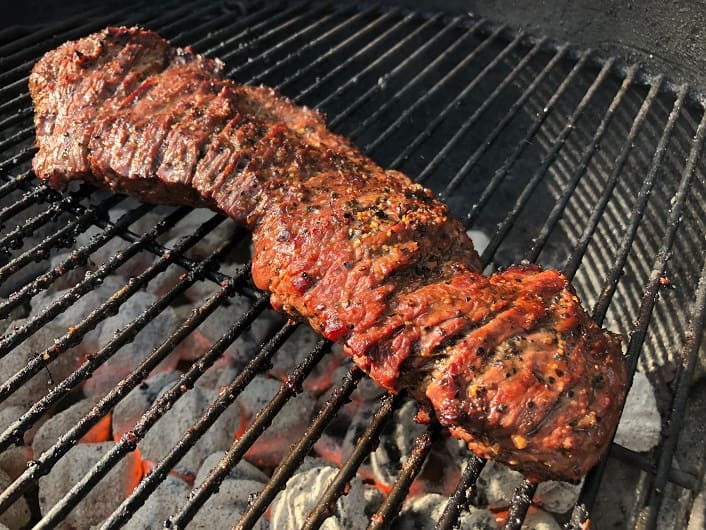
This is a thin steak and I cook it fast directly over the hot coals.
The brown sugar in the marinade helps these steaks take on a beautiful surface char. I flip the steak every minute and grill until it reaches an internal temperature of 130F. This steak took about seven minutes.
Make sure you slice the steak against the grain and you will have an incredibly tender flavor explosion.
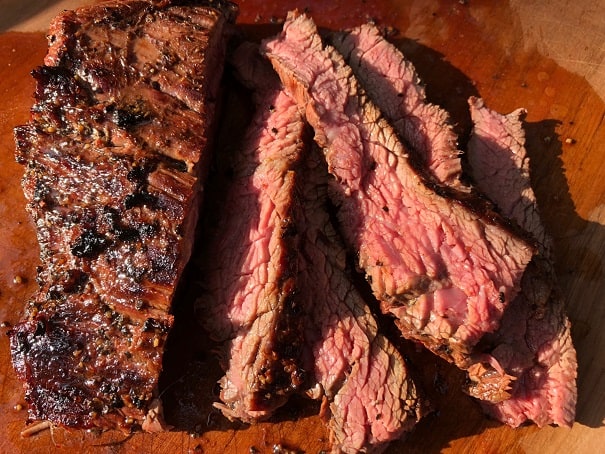
IMPORTANT: The structure of this steak is going to tempt you to slice it into bite sized slices by slicing it at the ends. This will be cutting WITH the grain and will give you a chewy steak. Cut the steak into thirds along the length of the bavette and then rotate those cuts and slice against the grain.
The slicing is not complicated as long as you take the time to look at the muscle fibers.
The rest of the ingredients were pretty standard, toasted corn tortillas with onions, peppers and some salsa verde (here is how to make salsa verde from scratch).
These great and easy fajitas were some of the best that I have had in years.
Just freaking amazing.
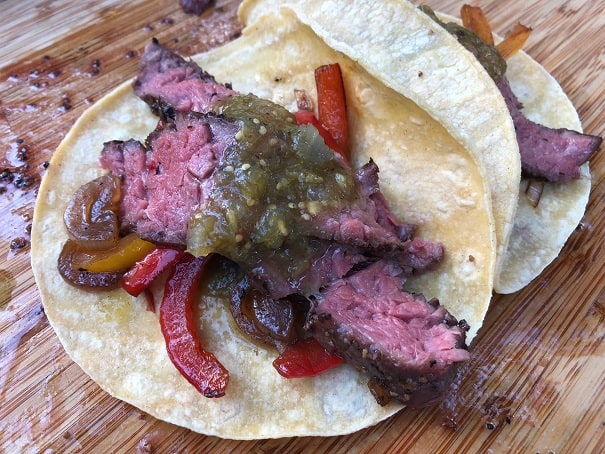

Grilled Bavette Steak Fajitas Supreme
Ingredients
- 1 cup soy sauce
- 1 tbsp black pepper
- 1 tbsp fresh ginger paste
- 1 tbsp brown sugar
- 1 tbsp fresh chopped garlic
- 3 lbs bavette steak
- 1 red bell pepper
- 1 yellow bell pepper
- 1 yellow onion
- corn tortillas
Instructions
- Combine the soy sauce, black pepper, brown sugar, ginger and garlic to create the marinade.
- Add the steak to the marinade and refrigerate for at least one hour and up to four.
- Prepare your grill for direct high heat cooking.
- Remove the steak from the marinade and place on the grill.
- Flip the steak frequently to prevent burning and cook to an internal temperature of 130F. About 7-10 minutes. Remove the steak from the grill and allow to rest.
- While the steak is resting slice the onions and cut the bell bell peppers into strips (discard seeds).
- Sear the vegetables over high heat in a wok or cast iron skillet until tender. Stir frequently to prevent burning.
- Slice the steak thinly, AGAINST the grain.
- Serve the sliced steak, onions and peppers on corn tortillas with choice of salsa and/or sour cream.
What Is a Bavette Steak?
The bavette is a cut from the flank subprimal of a steer. The name of the muscle is Obliquus abdominis and it gets the secondary name of “flap steak” because it hangs off the bottom of the flank as an odd flap of meat. The word “bavette” is of French origin and means “bib”.
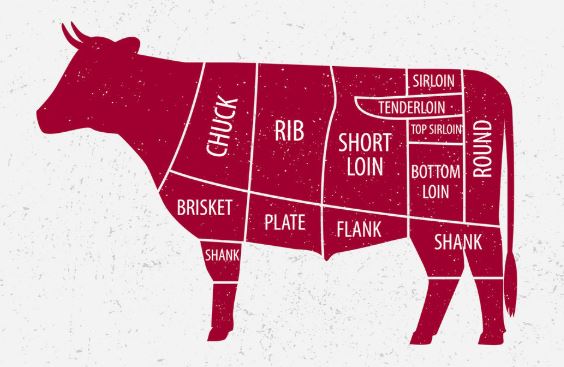
The cut is located directly below the skirt steak and is in close proximity to the flank steak. These are all abdominal muscles and the flavor profile and grain structure is similar between all three cuts.
Here is an absolutely stunning video from The Healthy Butcher YouTube channel that breaks down how to butcher the flank subprimal and exactly how the bavette, flank and skirt steaks are related. If you want to get serious about your steak education then you really need to watch the video.
The bavette is an excellent substitute for either flank or skirt steak. One of the reason that the bavette isn’t that well known is because there are only 2-4 pounds of this cut on a steer. This is one of those “Butcher’s Cuts” that can be hard to find.

